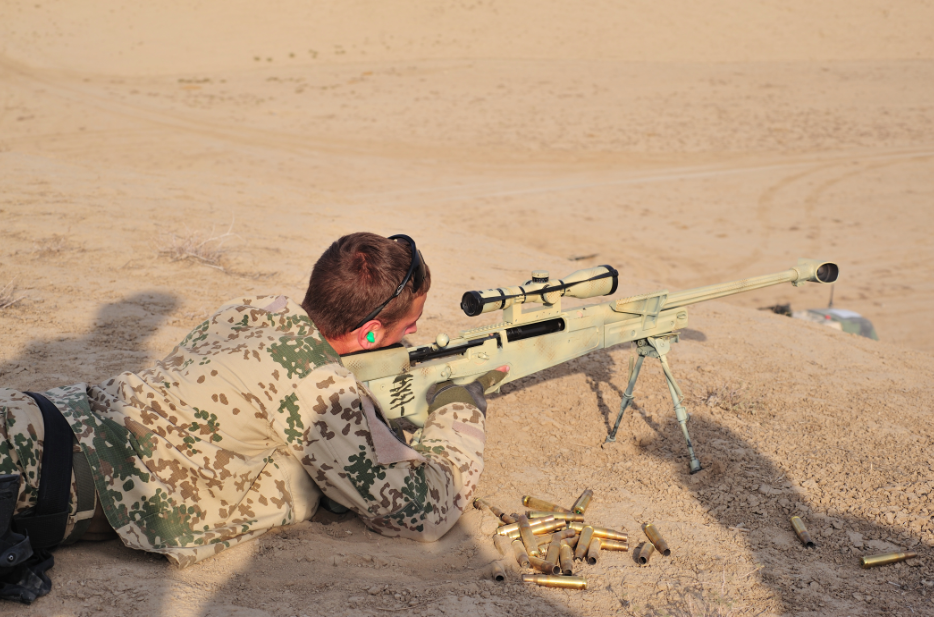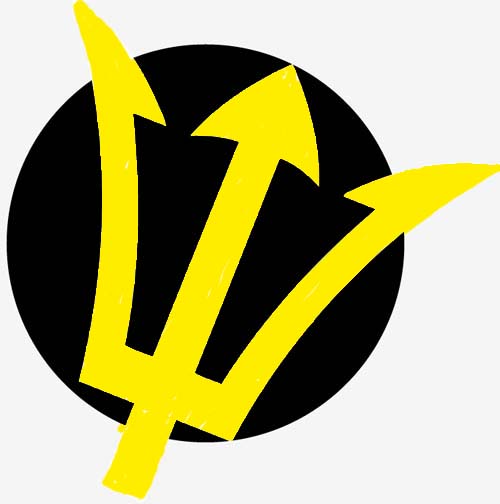
Spezialisierungen in der Truppe
Teamführer/Stellvertretender Teamführer – Team Leader/Deputy Leader
While not specialized skills per se, these vital functions deserve mention here. The team leader is an officer who leads the team both in training and during operations. The deputy team leader is usually a senior NCO with years of experience. He supports the team leader. Both are responsible for tactical leadership in the field, for ensuring that equipment is in good order, and for the welfare and readiness of their personnel.
Scharfschütze – Sharpshooter/Sniper
Sharpshooters and snipers support their team during combat operations by engaging selected targets with precision fire from concealed positions. They usually operate in two-man firing teams consisting of a shooter and a spotter. Their most important task is reconnaissance. To this end they are specially trained in the use optical surveillance equipment and in communications. Since SOF units are quite small, their sharpshooters and snipers are frequently forced to work without a spotter. This increases both their stress-load and their responsibility. They are the most important operational tool of the team. They undergo extremely intense training because their mission and their equipment are very complex.
Zugangstechniker – Breacher
Breachers are trained to force entry using demolition charges or firearms (e.g. shotguns). Targets include doors, walls, windows, ship’s hatches or hulls. This requires very precise application of explosives or firearms. Collateral damage and casualties are to be avoided.
Kampfmittelbeseitiger – EOD Specialist
The EOD specialist is capable of assessing explosive threats including IEDs, evaluating the options for their disposal, and advising the team leader regarding threats and options. He is capable of evaluating a location for its EO/IED threat potential, and is familiar with types of explosives and materials suitable for bomb-making. He also assists in on-site destruction of cached ammunition and weapons.
Special Operations Terminal Attack Controller (SOTAC) / Forward Air Controler (FAC)
The SOTAC / FAC is first and foremost a communications specialist capable of communication with land and sea units, manned aircraft and UAVs. He advises the team leader and acts as a forward observer to direct tactical fires (by artillery, aircraft, and UAVs) onto target.
Fernmelder – Communication Specialist
The communications specialist is responsible for the team’s communications gear and for conducting radio and other communications traffic. Today’s networked concept of operations makes the comm specialist the most vital link in the leadership chain.
Einsatzsanitäter – Combat Medic
The combat medic is trained to apply advanced emergency lifesaving techniques. He is in constant contact with and coordinates with in-theater medical facilities to ensure wounded and injured personnel receive treatment within the “Golden Hour” (treatment within one hour is considered the primary factor determining the survival of seriously injured personnel). He coordinates medical evacuation of casualties from the field.
Optronische Spezial Aufklärung – Optronic Intelligence Operator
Securing intelligence via still and video cameras either in the course of reconnaissance or for documentary purposes (e.g. securing evidence admissible in court) is a secondary function. Team members are trained to carry out this function in addition to their primary speciality.
Sensitive Site Exploitation (SSE)/ Tactical Site Exploitation (TSE)
All special operators are trained in the fundamentals of Sensitive Site Exploitation (SSE)/ Tactical Site Exploitation (TSE). It is not a speciality, but a secondary task. Nonetheless there are Lead SSE/TSE Operators who are trained to gather targeted information through conversation with local residents, and in evaluation, categorization and documentation of secured evidence before passing it on.
Unmaned Air Vehicle
The Unmaned Air Vehicle Operator is trained to support the team’s mission by operating a tactical drone.
Vertikale Verbringung – Vertical Insertion
The Vertical Insertion Operator is qualified to plan and supervise all forms of aerial insertion (parachute jump, Fast Rope, Repelling). This is a secondary, not a primary speciality. Because of the complex nature of the task and the need to adhere to special safety regulations when operating with aircraft, it remains a very important duty.




